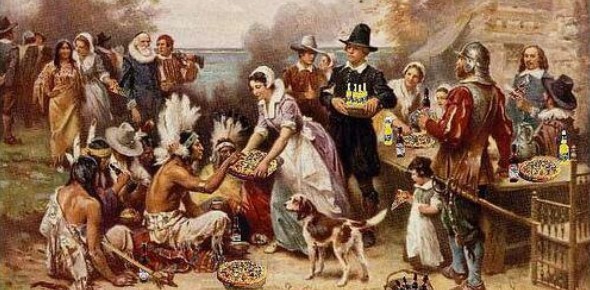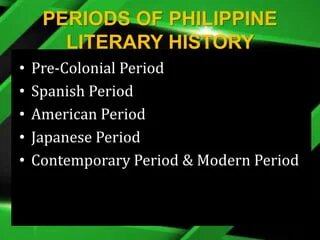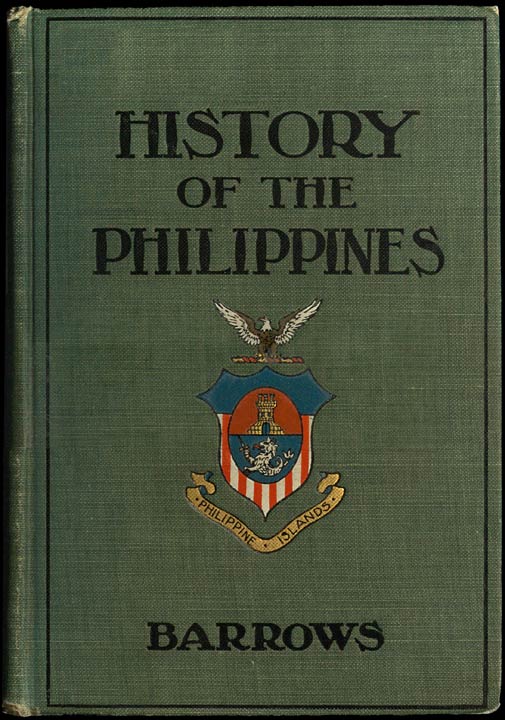Nestled in the heart of Southeast Asia the Philippines boasts a history as diverse and vibrant as its tropical landscapes. The captivating journey of the archipelago from 900 to 1565 exploring key events notable figures and pivotal moments that shaped the nation. Join us on a historical odyssey through the lens of The Forbes Daily unraveling the intriguing tapestry of the Philippines’ past.
History of the Philippines (900 to1565)
The period spanning 900 to 1565 represents a crucial chapter in Philippine history marked by cultural evolution, trade connections and the introduction of Islam. The archipelago was a melting pot of indigenous cultures, each contributing to the rich mosaic of traditions. The maritime prowess of Filipino seafarers facilitated extensive trade with neighboring Asian countries, laying the foundation for cultural exchange.

Timeline of Philippine History
A chronological exploration of Philippine history during this era reveals a fascinating tapestry of events. From the pre colonial societies with their sophisticated social structures to the arrival of Islam in the 14th century, the archipelago underwent significant transformations. The 15th century witnessed the arrival of European explorers setting the stage for the next phase of the Philippines’ narrative.
Philippine History Example
An exemplary moment in Philippine history during this period is the establishment of the Sultanate of Sulu. This Islamic state, founded around 1405, played a crucial role in trade and diplomacy, showcasing the dynamic interplay between local and international forces.
History of the Philippines Essay
Crafting an essay on the history of the Philippines demands an exploration of the archipelago’s resilience, adaptability, and cultural amalgamation. From the early influences of indigenous civilizations to the impacts of external forces, an essay would navigate the nuanced landscape of Philippine history.
Philippine History Summary
In summarizing this epoch, one must acknowledge the Philippines as a thriving hub of cultural exchange, with indigenous communities coexisting alongside Islamic influences. The groundwork for the archipelago’s future was laid during these formative years setting the stage for the next chapters in its history.
The Seven Periods of Philippine History
The history of the Philippines can be dissected into seven distinct periods each characterized by unique socio political dynamics. From the pre colonial era and Spanish colonization to the American and Japanese occupations these periods offer insights into the nation’s resilience and ability to adapt in the face of adversity.

History of the Philippines Tagalog
Delving into the Tagalog perspective of Philippine history reveals the unique contributions of the Tagalog people. From their pre-colonial societies to their role in the resistance against foreign rule, the Tagalog narrative intertwines with the broader history of the archipelago.
Philippine history is a tale of resilience, diversity, and cultural synthesis. As we explore the various facets of this history it becomes evident that the Philippines’ story is intertwined with global narratives reflecting the interconnectedness of the world.
History of the Philippines Summary
The history of the Philippines from 900 to 1565 is a captivating journey of cultural exchange trade and the emergence of distinct socio-political entities. The archipelago’s potential to navigate the complexities of its previous has paved the way for its existing and future.
Kasaysayan ng Pilipinas
Ang kasaysayan ng Pilipinas mula 900 hanggang 1565 ay isang kahanga-hangang paglalakbay ng kultura, kalakalan, at pagsilang ng mga mahahalagang pangyayari na bumuo sa kasalukuyang estado ng bansa.
Heroes of the Philippines
Throughout this period, the Philippines witnessed the rise of heroes who fought for freedom and independence. These heroes, both known and unsung, played pivotal roles in shaping the nation’s destiny.
What is Some History of the Philippines?
Some of the key aspects of Philippine history during this period include the flourishing indigenous cultures, the spread of Islam, and the initial encounters with European explorers.
What Was the Philippines Called Before?
Before it was named the Philippines, the archipelago was referred to by various names, including “Maharlika” and “Islas del Poniente.” These names reflect the diverse indigenous cultures and the early connections with neighboring regions.
Who is the Founder of Philippine History?
The foundation of Philippine history is a collective effort shaped by the contributions of indigenous communities early settlers and external influences. While there is not a single founder the archipelago’s records is a testomony to the resilience and ingenuity of its people.
History of the Philippines Book
For those eager to delve deeper into the history of the Philippines from 900 to 1565 exploring a comprehensive book on the subject is highly recommended. Numerous historical accounts and scholarly works provide in-depth insights into the complexities of this era.

History of the Filipino People
The history of the Filipino people is a dynamic narrative of adaptation resistance, and cultural synthesis. From the indigenous communities to the numerous corporations that emerged for the duration of this length the Filipino human beings have performed a central function in shaping the future of their homeland.
As we conclude our exploration of the records of the Philippines from 900 to 1565 it is evident that this generation laid the groundwork for the nation’s future. The diverse influences cultural exchanges and pivotal moments during this period have sculpted the Philippines into the vibrant and resilient nation we know today. By grasp the previous we achieve a profound understanding for the multifaceted tapestry that defines the archipelago and its people.
constituents xyandanxvurulmus.tMHe5qRmE3Gi
I just could not depart your web site prior to suggesting that I really loved the usual info an individual supply in your visitors Is gonna be back regularly to check up on new posts
Hi, Neat post. There is a problem together with your website in internet explorer, may check this?
IE nonetheless is the market chief and a big component
of folks will leave out your magnificent writing due to this problem.
My brother strongly suggested that I visit this website, and he was entirely correct. This content truly brightened my day. You have no idea how much time I had devoted to locating this information. Thank you.
Hey, cool post You can check if there’s a problem with your website with Internet Explorer. Because of this issue, many readers will overlook your excellent writing because IE is still the most popular browser.
sektor benim zaten amin evladi mobileidn.Diqj9GEy4Z4t
Over the past week, I’ve been an avid visitor to this awesome website with top notch user content. The site owner excels at engaging visitors. I’m so happy and hope they keep up their magnificent work.
hiI like your writing so much share we be in contact more approximately your article on AOL I need a specialist in this area to resolve my problem Maybe that is you Looking ahead to see you
Hi Neat post There is a problem along with your website in internet explorer would test this IE still is the market chief and a good section of other folks will pass over your magnificent writing due to this problem
hd porno free gghkyogg.pjmUWsb96PR
I really like what you guys are up too. This kind of clever work and exposure!
Keep up the excellent works guys I’ve added you guys to my own blogroll.
free hd porn 4k ggjennifegg.aEnW95sk4hD
Sultanbet Casino! Sultanbet offers a wide range of thrilling casino games, including slots, table games, live dealer games, and more. With a user-friendly interface and a reputation for fair play, Sultanbet Casino is a top choice for both beginners and experienced players.
For de beste tipsene om Casino i Norge og spennende spillanmeldelser, besøk kasinoekspert.com i dag!
Im Online Casino Deutschland finden Sie unterhaltsame und gewinnbringende Spiele. Zudem können Sie auf neue-onlinecasinos.net die neuesten Online-Casino-Optionen entdecken.
Deneme bonusu ve hoş geldin bonusu ile kazandıran kaliteli bahis sitesi Restbet ile sende kazanmaya başla.
goodhere Random porn vurucutewet.GcjNLovlXyI
ladyandtherose Creampie porn backlinkseox.35KYh9JYuhE
senin o bacini sikicem
Wow, awesome blog format! How long have you ever been blogging
for? you make blogging look easy. The full glance of
your web site is fantastic, let alone the content material!
You can see similar here dobry sklep
I would like to thnkx for the efforts you have put in writing this blog. I am hoping the same high-grade blog post from you in the upcoming as well. In fact your creative writing abilities has inspired me to get my own blog now. Really the blogging is spreading its wings quickly. Your write up is a good example of it.
child porn
child porn
child porn
child porn
child porn
child porn
child teen porn
child teen porn
child teen
Really excellent information can be found on web blog. “Education is what most receive, many pass on, and few possess.” by Karl Kraus.
He served {in the|within the|inside the|while in the|from the|during the} {military|army|armed forces|navy|armed service|military services} {during|throughout|in the course of|for the duration of|through|all through} {World|Globe|Planet|Entire world|Earth|Environment} War I {and then|and after that|after which|then|and afterwards|after which you can} {began|started|commenced} his {stage|phase} {career|profession|occupation|job|vocation} by {working|Operating|Functioning|Doing work|Performing|Doing the job} in {music|songs|audio|tunes|new mus 토지노 솔루션 ic} halls
{After|Following|Right after|Soon after|Immediately after|Just after} Jeff Porcaro’s {death|Loss of 토지노 솔루션 life|Demise|Dying} in 1992, he was {replaced|changed} by Simon Phillips
1에 메이저사이트 서 65
△내수 부양 정책을 쓸 필요가 메이저사이트 있다
{With Toto {once again|Once more|Yet again 토지노 분양 |Again} minus a {lead|direct|guide} vocalist, guitarist Steve Lukather stepped in to sing {lead|direct|guide} vocals {and became|and have become} the band’s new {front|entrance} {man|guy|gentleman|male|person}
|{You’re|You are|You happen to be|You might be} {using a|utilizing a|employing a} browser {that isn’t|that may not|that won’t} supported by {Facebook|Fb}, so {we’ve|we have} redirected {you to|you to definitely} {a simpler|a less complicated|an easier} {version|Edition|Model|Variation} to {give you the|provide you with the|supply you with the|provd 토지노 분양 e the} {best|very best|greatest|ideal|finest|most effective} {experience|encounter|expertise|knowledge|practical experience|working experience}
The band {didn’t|did not|failed to} get {along with|together with|in addition to|as well as|in conjunction with|coupled with} Byron 토지노 분양 , whose diva-like {behavior|conduct|habits|actions} and flamboyant {stage|phase} {presence|existence} {caused|brought on|triggered|induced|brought about|prompted} friction {during the|throughout the|through the|in the course of the|over the|in the} tour
dified|transformed|adjusted|improved}
Her bullshit {claim|declare|assert} {is that|is the fact that|is|is always that|is the fact|is usually that} we didnt {pay|spend|pay out|shell out|fork out|pay back} her, but there was a mixup {with the|U 토지노 솔루션 sing the|With all the|Together with the|Along with the|While using the} [band] {name|title|identify} that goes {back|back again|again} to our {original|authentic|unique|first|initial|primary} {management|administration}
|At {that point|that time}, Microsoft {Advertising|Marketing|Promoting|Advertising and marketing|Promotion} will {use your|make use of your} {full|complete|total|entire|whole|comprehensive} IP {address|deal with|tackle|handle} and {user|consumer|person}-agent string 토지노 솔루션 {so that|to ensure that|in order that|to ensure|making sure that|to make sure that} {it can|it could|it may|it might|it could possibly|it may possibly} {properly|correctly|effectively|appropriately|adequately|thoroughly} {process|procedure|method|approach|course of action|system} the {ad|advertisement|advert} {click|click on|simply click} and {charge|cost|demand} the advertiser
He served {in the|within the|inside the|while in the|from the|during the} {military|army|armed forces|navy|armed service|military services} {during|throughout|in the course of|for the duration of|through|all through} {World|Globe|Planet|Entire world|Earth|Environmen 토지노 솔루션 t} War I {and then|and after that|after which|then|and afterwards|after which you can} {began|started|commenced} his {stage|phase} {career|profession|occupation|job|vocation} by {working|Operating|Functioning|Doing work|Performing|Doing the job} in {music|songs|audio|tunes|new music} halls
Hey! This post couldn’t be written any better! Reading this post reminds me of my previous room mate! He always kept talking about this. I will forward this article to him. Pretty sure he will have a good read. Thank you for sharing!
Exactly what I was looking for, thanks for posting.
2면 상당히 낮은 수준이다 이렇게 얘기를 하셨고 그리고 여당 쪽 에서도 얘기를 하고 있는 걸로 알고 있고
Does your website have a contact page? I’m having a tough time locating it but, I’d like to shoot you an email. I’ve got some ideas for your blog you might be interested in hearing. Either way, great website and I look forward to seeing it improve over time.
Wonderful site. A lot of helpful information here. I¦m sending it to several friends ans also sharing in delicious. And of course, thank you on your effort!
What does the Lottery Defeater Software offer? The Lottery Defeater Software is a unique predictive tool crafted to empower individuals seeking to boost their chances of winning the lottery.
Admiring the time and energy you put into your website and in depth information you present. It’s good to come across a blog every once in a while that isn’t the same old rehashed information. Great read! I’ve bookmarked your site and I’m including your RSS feeds to my Google account.
I’m not that much of a internet reader to be honest but your blogs really nice, keep it up! I’ll go ahead and bookmark your site to come back down the road. Cheers
tipobet porn